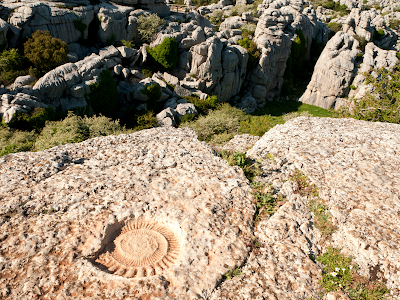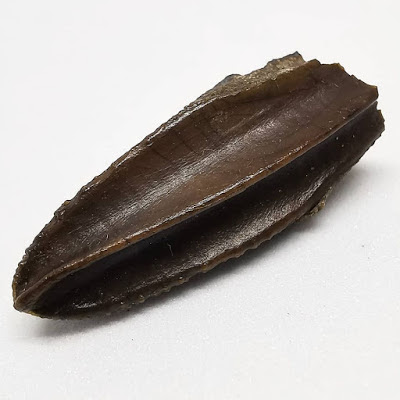You may recall Dr. Victoria Arbour, curator of palaeontology at the Royal BC Museum from her work on ankylosaurs & that interesting specimen from Hornby Island thought to be a pterosaur but further study revealed to be a saurodontid fish, an ambush predator with very sharp serrated teeth and elongate, torpedo-like body. Not a pterosaur but still a massively exciting find. Arbour was very gracious about the new interpretation, taking it in stride. She has since gone on to name this partial ornithischian dinosaur from Sustut Basin, as well as the ankylosaurs Zuul, Zaraapelta, Crichtonpelta, and Ziapelta. She's been a busy bee.
For this latest find, she’s partnered up & published her findings with David Evans from the Royal Ontario Museum in the peer-reviewed scientific journal PeerJ - the Journal of Life and Environmental Sciences last year. Their paper describes this partial dinosaur skeleton found amongst the inhospitable boreal forests and folded rock of the Canadian Cordillera near the Sustut Basin of northern British Columbia, Canada.
The first bones were collected by geologist Kenny F. Larsen who was surveying for uranium along the then in-construction BC Rail line along the Sustut River. The bones were later donated to Dalhousie University in Halifax, Nova Scotia then accessioned by the Royal British Columbia Museum in Victoria, BC. The skeleton includes parts of the pectoral girdles, left forelimb, left hindlimb, and right pes. Their rationale for a new species distinguished from other named leptoceratopsids is based on the proportions of the ulna and pedal phalanges.
This specimen was previously described in 2008 as an indeterminate small-bodied, bipedal neornithischian, possibly representing either a pachycephalosaur or a basal ornithopod similar to Thescelosaurus. With more material to work with, Arbour and Evans reinterpreted the remains as a leptoceratopsid ceratopsian, Ferrisaurus sustutensis, gen. et. sp. nov.
 |
| Figure 2: Preserved elements of RBCM P900 |
It has been placed, within a reasonably resolved phylogenetic context, with Ferrisaurus recovered as more closely related to Leptoceratops than Montanoceratops. At 68.2–67.2 Ma in age, Ferrisaurus falls between, and slightly overlaps with, both Montanoceratops and Leptoceratops, and represents a western range extension for Laramidian leptoceratopsids. Leptoceratopsidae is an extinct family of neoceratopsian dinosaurs from Asia, North America and Europe. They resembled and were closely related to, other neoceratopsians, such as Protoceratopsidae and Ceratopsidae, but they are more primitive and generally smaller.
 |
| Figure 3: Pectoral Elements of Laramidian leptoceratopsids |
The fossil plant finds may not seem that exciting in comparison to a dinosaur but Cretaceous plants in BC are also relatively rare. Most of our best fossil plant sites are Eocene, the ancient lakebed sites at McAbee and Princeton — so a good 15 million or so years earlier.
During that expedition, the team recovered a fragment of a large Cretaceous terrestrial trionychoid turtle Basilemys from the family Nanhsiungchelyidae near the confluence of Birdflat Creek and the Sustut River. This largely North American turtle along with the plants will allow us to make correlations with terrestrial finds from other sites including those from the Nanaimo group, the inland island construction sites and the Trent River on Vancouver Island and Horseshoe Canyon in southwestern Alberta. Jordan Mallon and Donald Brinkman have done some good work on the Basilemys morrinensis from the Upper Cretaceous Horseshoe Canyon Formation. The Sustut Basin turtle and plant remains have been accessioned into the Royal BC Museum’s collections in Victoria.
It wasn't until last summer that Arbour was able to extract more of this dinosaur and not all of it as their field season was shortened by a cold snap that brought snow and ice, freezing the ground they were working in the high alpine. Arbour plans to continue her work searching for dinosaur fossils in the high alpine plateaus of northern British Columbia. A fresh grant this year from the Natural Sciences and Engineering Research Council of Canada (NSERC) will help pave the way for both her and some summer students to continue their fieldwork.
Reference: Arbour VM, Evans DC. 2019. A new leptoceratopsid dinosaur from Maastrichtian-aged deposits of the Sustut Basin, northern British Columbia, Canada. PeerJ 7:e7926 https://doi.org/10.7717/peerj.7926. Here's a link to the paper: https://peerj.com/articles/7926/
Figure 1: RBCM P900, the holotype of Ferrisaurus sustutensis, was collected along the BC Rail line near the intersection of Birdflat Creek and the Sustut River in 1971, in the Sustut Basin of northern British Columbia, Canada. Map modified from Evenchick et al. (2003).
Figure 2: Preserved elements of RBCM P900, holotype of Ferrisaurus sustutensis, in white (gray represents missing parts of incomplete bones). RBCM P900 includes a partial right coracoid, partial left scapular blade, complete left radius, partial left ulna, partial left tibia, fibula, and coossified astragalus and ?calcaneum, partial left metatarsals I-IV, and digits III (phalanges 2–4) and IV (phalanges 2–5) of the right pes.
Figure 3: Pectoral elements of RBCM P900, holotype of Ferrisaurus sustutensis, compared to other Laramidian leptoceratopsids. (A) Fragmentary right coracoid of RBCM P900 in lateral view, compared to (B) complete right scapulocoracoid of CMN 8889, Leptoceratops gracilis, lateral view centered on coracoid with scapula in oblique view. Fragmentary left scapular blade of RBCM P900 in (C) lateral and (D) medial view, compared to (E) left scapula of MOR 300, Cerasinops hodgskissi in medial view, and (F) left scapula of TCM 2003.1.9, Prenoceratops pieganensis in lateral view. Abbreviations: sp, sternal process.


























